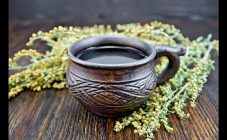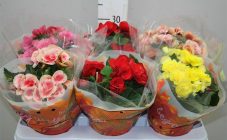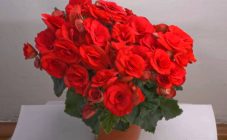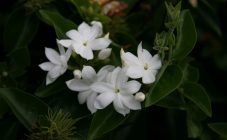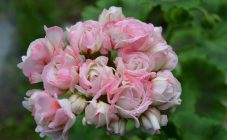Content:
Recently, more and more often in apartments and private houses you can find exotic plants grown by amateur flower growers. The cultivation of such flowering and decorative exotic plants is not only a tribute to fashion, such plants bloom beautifully and have an attractive appearance.
Begonia Coral is one of the most beautiful flowers, home to distant Brazil, which has taken root in our country. Many gardeners are engaged in the cultivation of various varieties of Coral begonias. Experts note that it is not difficult to grow this indoor shrub, and the plant responds to care with active growth and abundant flowering.
The nuances of planting and caring for this tropical beauty can be easily explained: the flower grows in nature in certain climatic conditions, which must be recreated at home in order for the plant to feel comfortable.
General description of begonia
Although the official homeland of this perennial shrub is Brazil, coral begonia can be found in several regions of Central and South America. This is a wild-growing perennial shrub, the shoots of which can reach a height of 2-2.5 m, and the diameter of the bushes is 0.5-1.2 m.But the domestic varieties of begonias are much smaller - their height ranges from 0.7 to 1 m. Shoots of such indoor flowers are erect, strong enough. The foliage has a bright emerald color, is arranged alternately, the length of the leaf plates can reach 17-19 cm, the width - no more than 5 cm. On the leaf plates there are small spots of a silvery or milky color. The foliage can be oval, elongated, or slightly jagged.
Usually, the first buds on the Coralova begonia appear in early April, but in room conditions, subject to the temperature regime, this perennial shrub can bloom throughout the year. The flowers are formed from fused red petals (there are many shades of petals of this color), white buds are extremely rare. The inflorescences of small buds look like bunches of berries. The flowering of begonia continues under natural conditions for a couple of months.
The pleasant delicate aroma of blossoming flowers is one of the main advantages of Coral begonias, and many growers collect these flowers and brew them like tea. It is noted that this tea has a pleasant, flowery, slightly sour taste.
Characteristics of species and varieties of crops
There are many varieties of begonias:
- ever-flowering - got the name because of the length of the flowering period;
- liana - the main stem of the plant is liana-like, in length it can reach 2.5-3 m. Growing up, the shoot clings to any objects. Under natural conditions, it is most often attached to tall trees;
- deciduous - they do not have aerial shoots, and the leaves are located in the root zone. This plant looks very beautiful thanks to its large leaf plates, which differ in shape and color;
- bush - in this species, shoots grow well, forming bushes of different height and volume. The main varieties of spray begonias are coral (including Angel Wings begonias) and fuchsia;
- tuberous - begonias of this species have a characteristic root in the form of a tuber.
Features of planting and caring for the crop at home
Before planting begonia seedlings, you need to prepare a nutrient mixture and appropriate pots.unfortunately, in specialized stores there is no special soil for these perennials on sale, so experts recommend purchasing a nutrient substrate for violets, which is most optimal for growing begonias. At home, prepare the substrate as follows: mix the following ingredients in a 1: 1: 1: 2 ratio:
- high-moor peat;
- compost;
- river sand;
- garden land.
A layer of drainage 1.2-1.4 cm thick is laid out in the pot, then a layer of prepared substrate in which the plant is planted, and the top of the pot is filled with the rest of the prepared soil.
If you change the soil in pots every year, then there is no need for additional fertilizing.
At home, begonia is placed so that direct sunlight does not fall on its foliage. The lighting of these bushes should be diffused. Light shading is acceptable. It is optimal to place flowerpots with this plant near windows facing the north side.
The heat-loving tropical beauty does not tolerate drafts, it can hurt, therefore, it should be installed in places where air movement is minimal. The air temperature should be maintained within 18-24⸰С, and if in winter the temperature in the room drops below 14⸰С, then begonia may die.
Coral begonia - the main care for it at home is timely watering and creating a certain humidity in the air. Water the plant sparingly, avoiding stagnation of moisture in the soil. The main criterion is the moisture content of the top layer of the soil, when it dries up, it means it's time to do the next watering. The begonia leaf has an interesting feature - it is able to get rid of excess moisture.
The easiest way to propagate begonia is by leafy cuttings. Such reproduction is carried out as follows:
- the leaf and leg are cut off from the central part of the plant, the cuttings are carried out carefully, trying not to damage the main shoot;
- placed in a container with clean water;
- after the roots appear, the seedlings can be planted in a previously prepared substrate (it should be of the same quality as for adult plants).
In the future, you should take care of young plants in the same way as for adult bushes.
Major diseases and pests, control methods
The main diseases that this flowering perennial can be exposed to:
- gray rot;
- bacterial spotting.
You can fight rot by spraying the plant with Bordeaux liquid or copper sulfate. There are no drugs against bacterial spotting, so the plant is destroyed, and the soil is thrown away. The cause of this disease is pathogenic bacteria.
The following pests can attack the plant:
- scabbards;
- spider mite.
You can pick these insects by hand, or remove the pests with a soft sponge dipped in soapy water.
The main reason a plant can get sick or be attacked by pests is a weakened immune system or improper care.
Agrotechnics
It should be recalled once again the basic rules of agricultural technology used in caring for coral begonia:
- compliance with the irrigation regime;
- maintaining a certain temperature and humidity;
- correct formation of bushes;
- apply fertilizer if necessary.
This tropical beauty is easy to grow indoors; with proper care, the plant will bloom profusely, filling the room with a subtle pleasant aroma.


